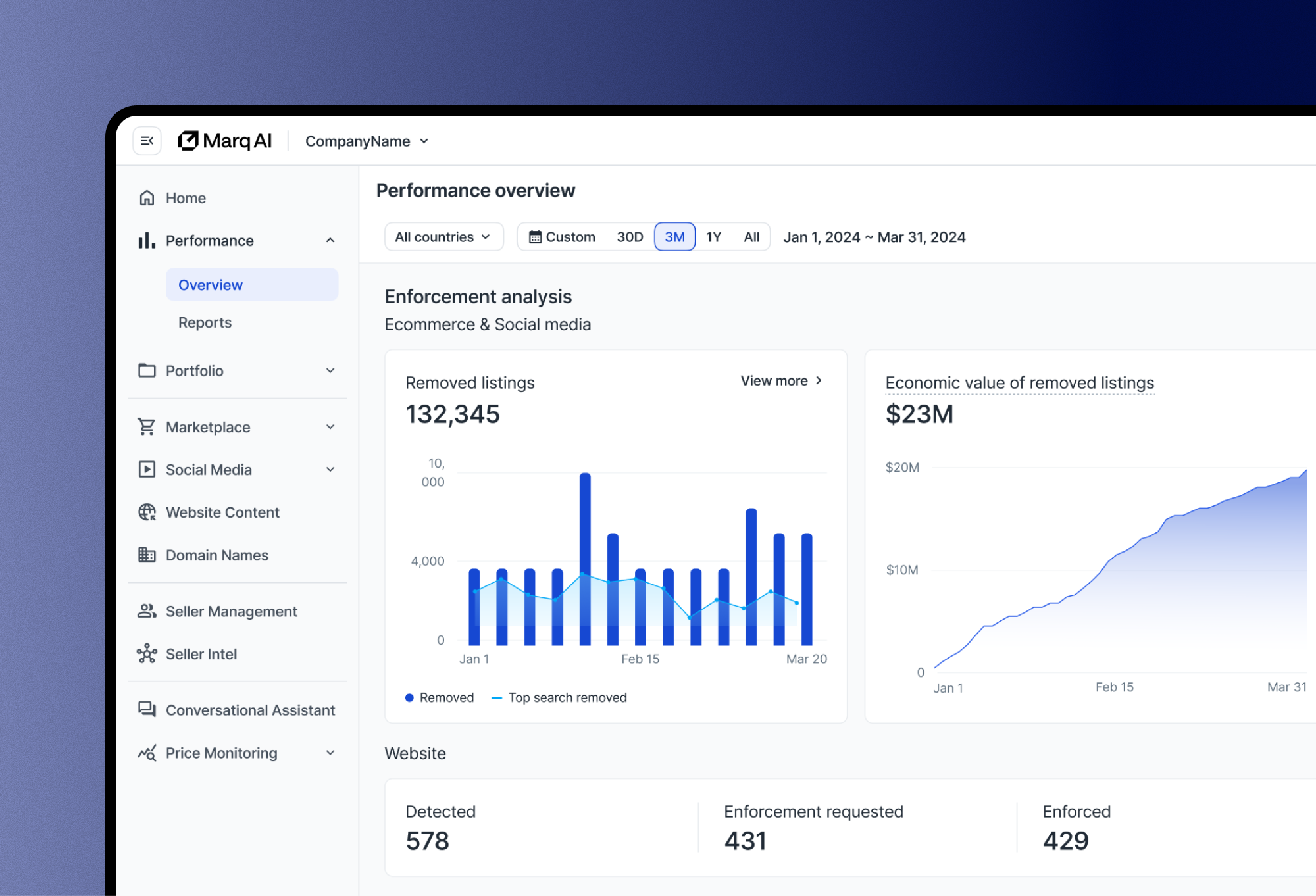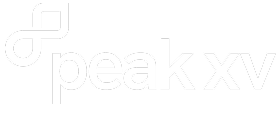Counterfeits don’t just disrupt sales. They force brands into an endless cycle of reactive one-by-one takedowns, draining resources without solving the bigger networks behind them.
At MarqVision, our product team saw this pattern play out again and again. So, we asked ourselves a different question: What if enforcement could move beyond chasing listings, and instead give brands the strategic clarity to stay ahead?
That question led to this month’s launch of the Marq AI Brand Exposure Report, an innovation meant to help brands measure risk, prioritize action, and prove the value of their protection programs. In this Q&A, we sat down with Jay Park, who leads counterfeit strategy at MarqVision, to discuss the decisions, challenges, and roadmap that shaped the new product.
Q: Did the idea for the report come from client requests, or was it defined internally?
A: One of the biggest challenges brand managers faced was quantifying enforcement results and translating them into strategic value. Internally, we asked: “How can we show real ROI to brands?”
Landscaping millions of data points across hundreds of marketplaces is the first answer to this question, and it would have been a daunting task even just three years ago. But thanks to all the investments we’ve made in AI and intimately understanding our customers’ needs and IP portfolios, we were able to create an “IP coverage layer” on top of our customer’s data to generate personalized recommendations in order to save them time while still quantifying the business impact of their brand protection program.
The result was the Marq AI Brand Exposure Report: a tool that quantifies threats and provides insights for actionable strategy.
Key features include:
1. A Single Map of Global Risk
Think of it as a living “heatmap” of brand risks. The system continuously scans millions of listings across Amazon, Alibaba, Walmart, and beyond, overlaying them against your IP coverage. In just one single view, you’re able to see the regions, platforms, and sellers that are putting your brand most at risk. Click into “China,” for instance, and you’ll see both saturation levels and the strength of your existing trademarks in the country itself. This global risk map informs your enforcement strategy going forward.
2. A Decision-Making Engine
Until now, dashboards have shown a snapshot of “what’s happening.” The Brand Exposure Report takes it further, building a IP coverage layer on top of the existing data to drive powerful insights and enforcement recommendations. It displays risk and recommends the next steps to take: which listings matter most, where IP gaps exist, and which actions will return the highest ROI. Instead of guesswork, brand teams now get a prioritized, personalized plan generated and backed by AI.
Our product also recognizes details that human reviewers or basic keyword filters often miss, like brand names hidden inside images, subtle material discrepancies, or networks of sellers clustering under multiple storefronts. Along with flagging the suspicious activity, the Report generates enforcement recommendations based on the strength of your IP coverage, with reports that include product attributes, origin information, and counterfeit signals, saving weeks of manual drafting.
3. Saturation Rate
The introduction of the Saturation Rate goes beyond simple takedown counts, providing a visualized score of how exposed a brand is to counterfeit risks across regions and platforms. This ratio compares authentic listings to counterfeit ones, giving brands an easily trackable benchmark to quantify risk across markets and see if the trend is going up or down over time.
Q: How does the Brand Exposure Report change the daily work of brand managers?
A: They can instantly prioritize which listings or sellers to target first. ROI can be clearly explained using quantified metrics. Repetitive reporting tasks are automated, allowing teams to focus on strategy rather than paperwork.
Design Challenges and How We Solved Them
Q: What were the toughest challenges in developing the Brand Exposure Report?
A: Two main issues stood out:
- Industry-specific differences. Fashion counterfeits often involve size or printing errors, fake jewelry faces material/plating issues, and beauty deals with altered formulas and packaging. Even within industries, each brand has unique challenges. To address this, we built custom training loops into the AI, using brand-specific data and feedback.
- Rapidly changing seller tactics. Counterfeits are no longer confined to marketplaces like AliExpress or Shopee. Sellers now use Instagram, TikTok, and live-streaming to bypass detection. To keep up, we expanded monitoring capabilities and worked closely with both internal ops teams and client feedback loops.
Q: How do you adapt to these evolving challenges?
A: By constantly feeding real-world data back into the AI model, we ensure it becomes more precise over time. We also maintain agile feedback channels, both internally (IP experts spotting new tricks like “DM-to-buy” or “hidden link” tactics) and externally (clients requesting live-stream detection or new platform coverage).
This collaborative loop allows us to improve with each iteration.
Looking Ahead
Q: What’s next for the Brand Exposure Report?
A: We’re moving beyond takedowns and toward helping brands build strategic defenses. Three priorities stand out:
- Custom AI Models. We’re constantly working to create more customized, higher precision in identifying infringements, tailored to each brand’s unique threats.
- Consumer-Journey Detection. Designing AI agents that mimic how real shoppers search, browse, and engage with platforms to detect counterfeits as consumers experience them.
- Live-Stream & Data Segmentation. Extending coverage to live-stream sales and enabling granular data classification so brands can align enforcement insights with business decisions.
Our vision is clear: transform counterfeit enforcement from a cost into an investment. The Brand Exposure Report isn’t just about removing fakes: it’s about protecting brand value and maximizing ROI.
A Message to Brands Facing Counterfeit Challenges
Q: What would you tell a brand seeing the Brand Exposure Report for the first time?
A: Anyone who has dealt with counterfeits knows takedowns alone don’t solve the problem. Listings resurface instantly, and the pace only increases. That’s why enforcement must level up from listing-by-listing to seller- and network-level strategy.
The Marq AI Brand Exposure Report provides market risk scores, seller insights, and ROI metrics that shift enforcement from reactive to strategic. Brands can prioritize threats, allocate resources efficiently, and prove the value of brand protection.
Most importantly: counterfeit enforcement is an investment. Done right, it safeguards brand value and pays dividends over the long-term. Marq AI is here to be that partner for you, building smarter IP protection with every step.
4 Enforcements a Week to 400: Scale Brand Safety with Marq AI

Don’t Just Find Counterfeits. Dismantle the Entire Network.

.png)
Discover the latest trends and challenges in IP protection

Take Control of Your Trademarks with MARQ Folio

Renew and Manage Your Trademarks Easily With MARQ Folio

We’re waiting to hear from you

See the best brand protection solution in action

Don’t let piracy steal your growth

Talk to us about your brand protection problems

Put an end to impersonating websites
Subscribe to our newsletter
Stay up to date on the latest IP Protection content from MarqVision.









